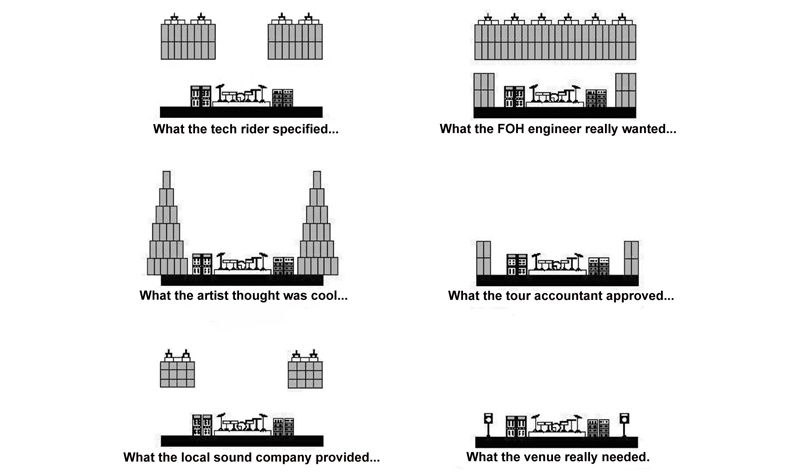The cartoon above (and available as a PDF here), which first appeared in Live Sound International at least 20 years ago, is always good for a laugh, but it also brings up a good point.
One of the difficulties we regularly face as live audio practitioners is working with a variety of parties in determining what’s best for a gig in terms of system size, scale, and complexity.
My approach is to first make there’s a solid foundation—basics such as enough console channels and processing, suitable loudspeaker size and quantity, appropriate stage monitoring, and so on. In other words, I’m not going even going to talk about miking up an entire choir with wireless lavs until the house system is at least adequate to deliver coverage to the entire space.
While most sound providers offer system packages of various sizes (usually with the biggest called the “A” rig, the next size down the “B” rig, etc.), not every package is the exact correct formulation for every gig. Variables usually come into play, and we need to be flexible in this regard.
We also must work to educate our various customer bases. Once, my company was asked to handle a corporate event in the same ballroom we’d worked successfully twice before. Knowing the room, we could have easily just supplied the same rig and had a “good enough” show. And in fact, the client, who was the same client as with the previous gigs, wanted us to bring the same system.
But in looking at the floor plan for this particular event, I realized that we should do things a bit differently—in this case, adding some delay stacks and also a few frontfills. I talked at length with the client about coverage versus volume, and how the additions to the system would result in better overall coverage for the specific configuration of this event. After the show, he noted how much he appreciated our attention to detail, as well as the extra work involved in getting it exactly right.
So: foundation, flexibility, attention to detail, communication, and education. After that, by all means discuss the extras.
Click here for a pdf version of the cartoon.















